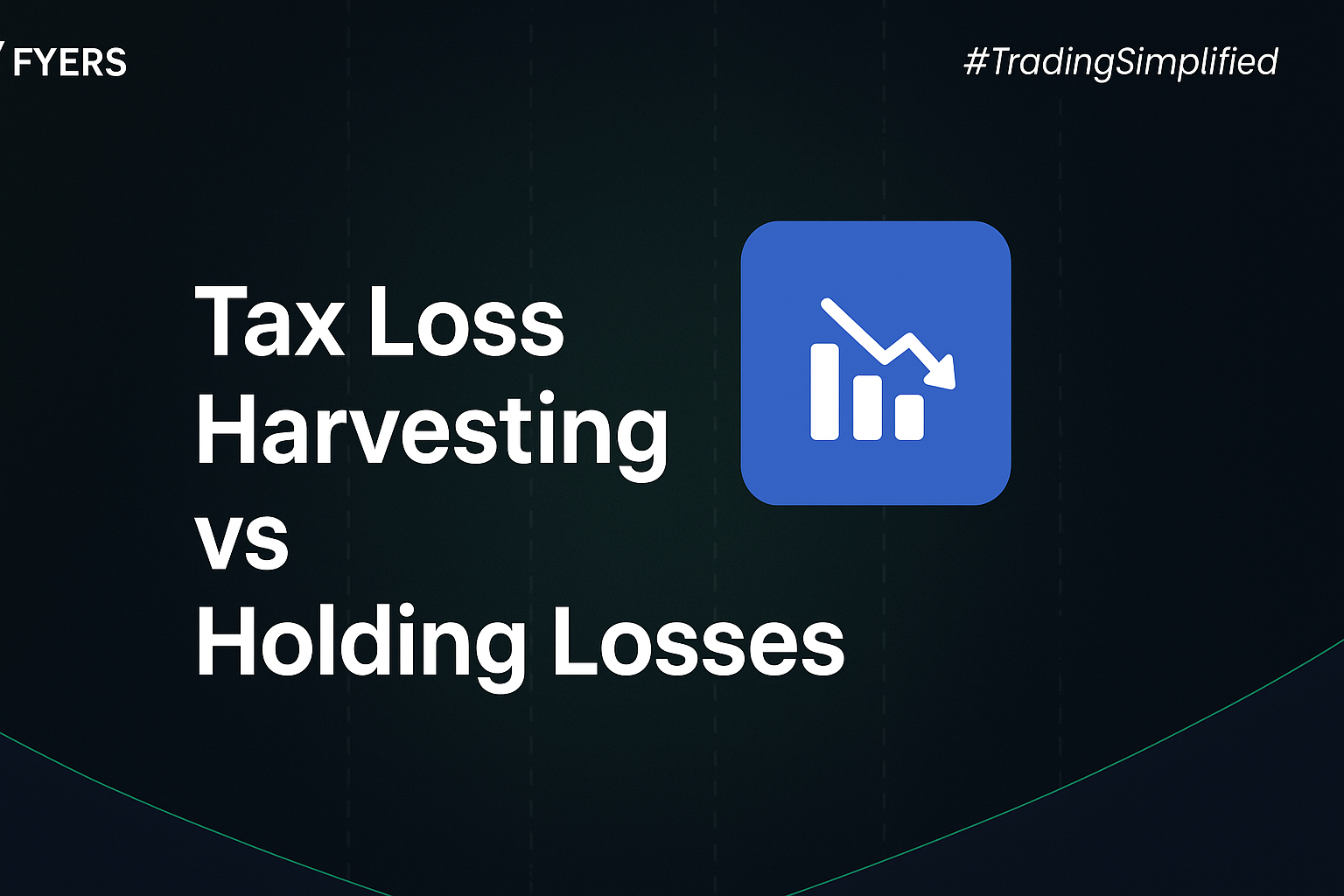

 31 Aug, 2025
31 Aug, 2025
 3 mins read
3 mins read

When market volatility eats into your investments, deciding what to do with losses can be challenging. Some investors simply hold on, hoping markets recover. Others actively use tax loss harvesting to offset gains and lower tax liability.
But which approach makes more sense in practice? Let’s break it down.
Tax loss harvesting is the practice of selling investments at a loss to offset capital gains made elsewhere. By realizing losses on certain securities, investors can reduce their overall taxable income.
For example, if you made a profit of ₹1,00,000 on one stock but booked a ₹40,000 loss on another, only the net ₹60,000 gain would be taxed.
Put simply, it’s a way of turning market downturns into potential tax savings.
Tax harvesting isn’t limited to direct equities—it also applies to mutual funds. Here’s how:
Stocks: You sell a loss-making stock to offset gains from another profitable one. Later, you may re-enter the same stock (after respecting wash-sale rules where applicable).
Mutual Funds: Investors redeem units of underperforming funds to adjust against capital gains from other schemes. Many fund houses even guide clients on tax harvesting during financial year-end.
This makes tax harvesting in stocks and mutual funds a versatile strategy for reducing taxable gains across asset classes.
Smart investors follow structured approaches instead of using tax harvesting randomly. Some common strategies include:
Offsetting Short-Term Gains: Since short-term capital gains are taxed at higher rates, offsetting them with losses can bring significant savings.
Balancing Long-Term Gains: Long-term losses can be set against long-term gains, lowering tax liability while maintaining portfolio health.
Rebalancing Portfolio: Tax harvesting often goes hand-in-hand with portfolio rebalancing—exiting weak assets while aligning with long-term goals.
Using Carry-Forward Losses: If losses exceed gains, they can usually be carried forward for up to eight years under Indian tax laws.
These tax loss harvesting strategies show how losses can be managed proactively rather than passively endured.
The practice offers several benefits for investors, including:
Lower Tax Outgo: Reduces overall taxable income.
Efficient Portfolio Management: Allows investors to trim underperforming holdings.
Flexibility Across Assets: Works in both stocks and mutual funds.
Long-Term Planning: Losses carried forward can offset gains in future years.
These benefits of tax loss harvesting make it a powerful tool for investors who want to align tax efficiency with wealth creation.
Not every situation calls for tax harvesting. Sometimes, holding losses may make more sense:
If you strongly believe the stock will recover and create greater long-term wealth.
When booking losses would disrupt your asset allocation.
If you don’t have sufficient gains to offset—realizing losses unnecessarily might reduce compounding potential.
In such cases, patience may outweigh the immediate tax benefit.
|
Aspect |
Tax Loss Harvesting |
Holding Losses |
|---|---|---|
|
Objective |
Reduce taxable gains |
Wait for market recovery |
|
Best For |
Investors with capital gains in the same year |
Long-term investors without urgent tax concerns |
|
Impact |
Provides immediate tax relief |
May yield higher returns if asset rebounds |
|
Risk |
Losing potential recovery upside |
Higher tax liability if no action taken |
The choice depends on your tax profile, investment horizon, and conviction in the asset.
While the idea sounds straightforward, investors often make avoidable mistakes such as:
Selling purely for tax reasons without considering portfolio quality.
Ignoring transaction costs that eat into savings.
Not adhering to wash-sale restrictions (where applicable).
Overusing the strategy and missing long-term growth opportunities.
Avoiding these pitfalls ensures tax harvesting remains a tool, not a trap.
Tax loss harvesting can help investors reduce tax burdens while reshaping their portfolio. However, it’s not always superior to simply holding losses. The decision ultimately depends on your financial goals, market outlook, and tax situation. Used wisely, it can strike a balance between immediate tax savings and long-term wealth creation.
It is the practice of selling loss-making investments to offset capital gains and reduce tax liability.
Yes, it can be applied to mutual fund units just like stocks, by redeeming underperforming funds to balance taxable gains.
The key benefits include lower taxes, portfolio rebalancing, and the ability to carry forward losses for future use.
Not always. It depends on your overall portfolio, future prospects of the investment, and whether you have gains to offset. Sometimes, holding losses may be better.
Calculate your Net P&L after deducting all the charges like Tax, Brokerage, etc.
Find your required margin.
Calculate the average price you paid for a stock and determine your total cost.
Estimate your investment growth. Calculate potential returns on one-time investments.
Forecast your investment returns. Understand potential growth with regular contributions.